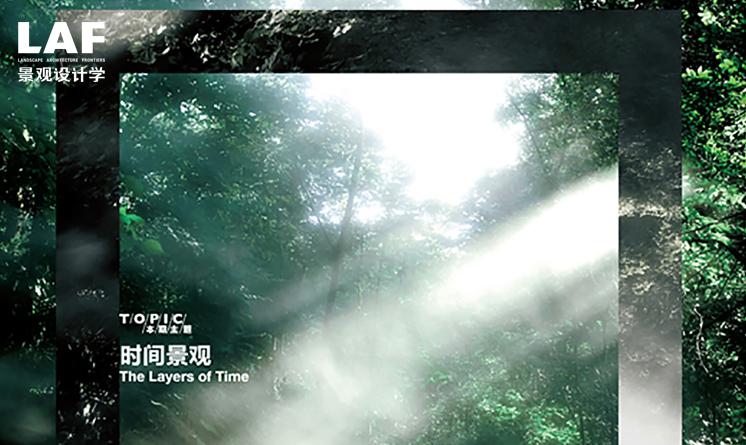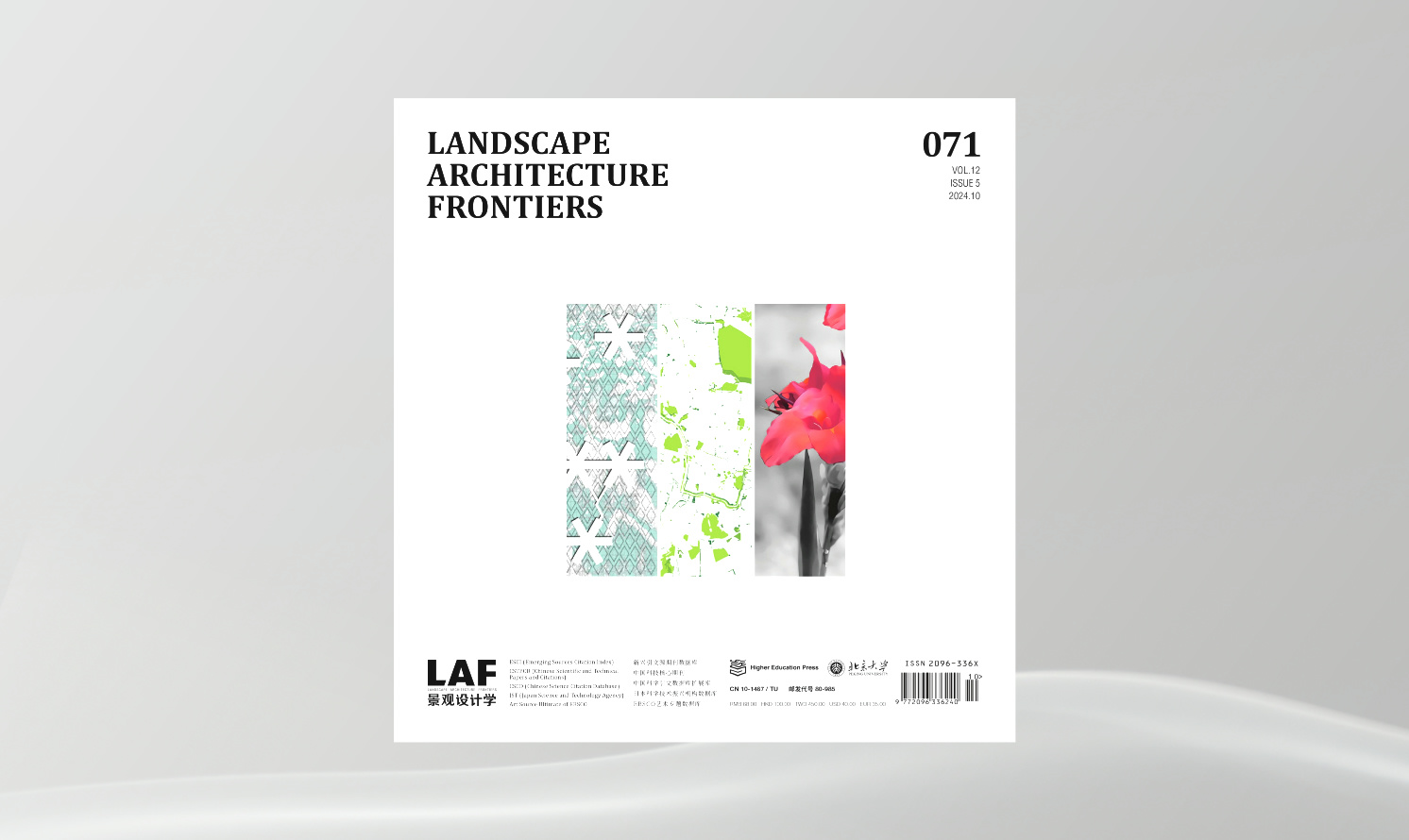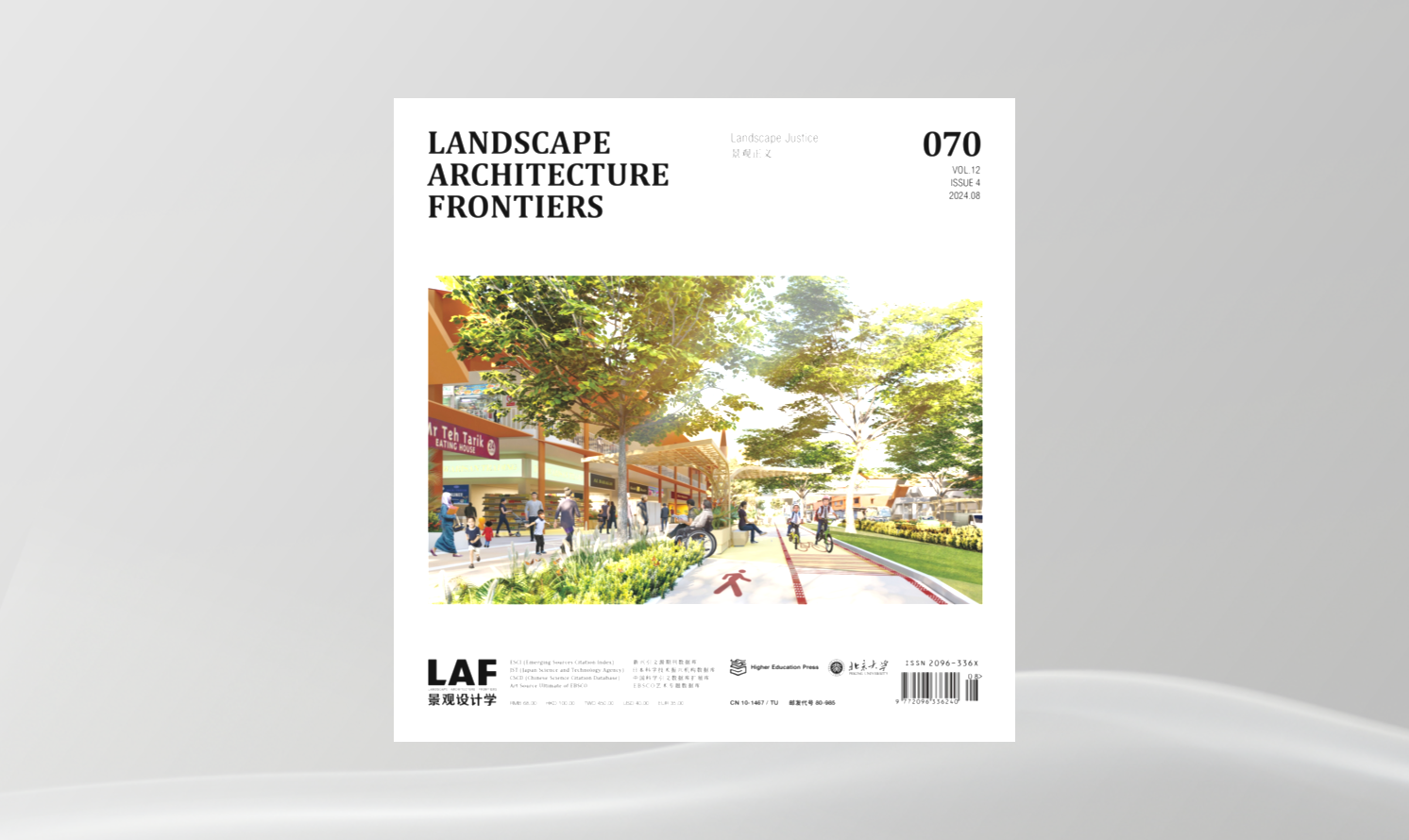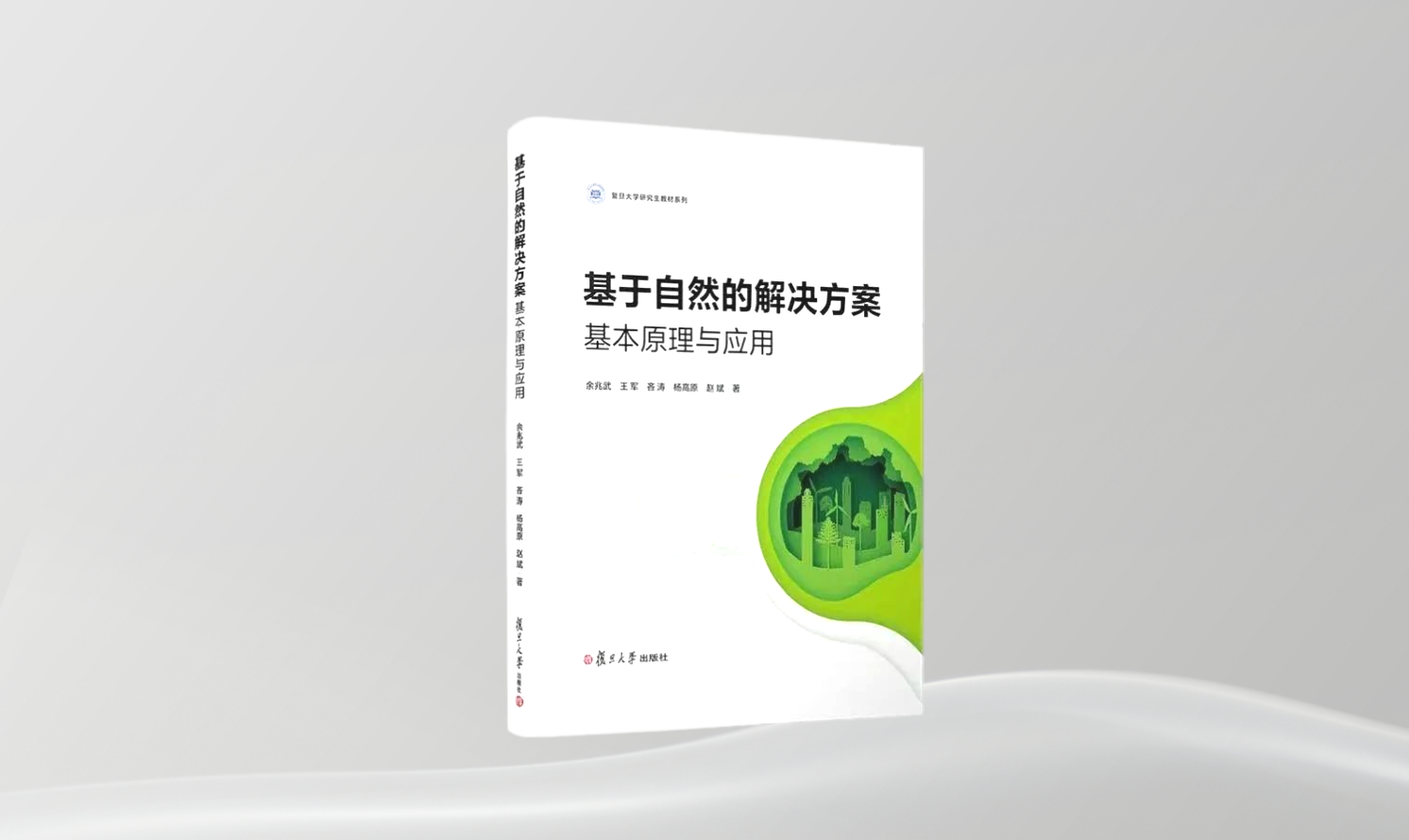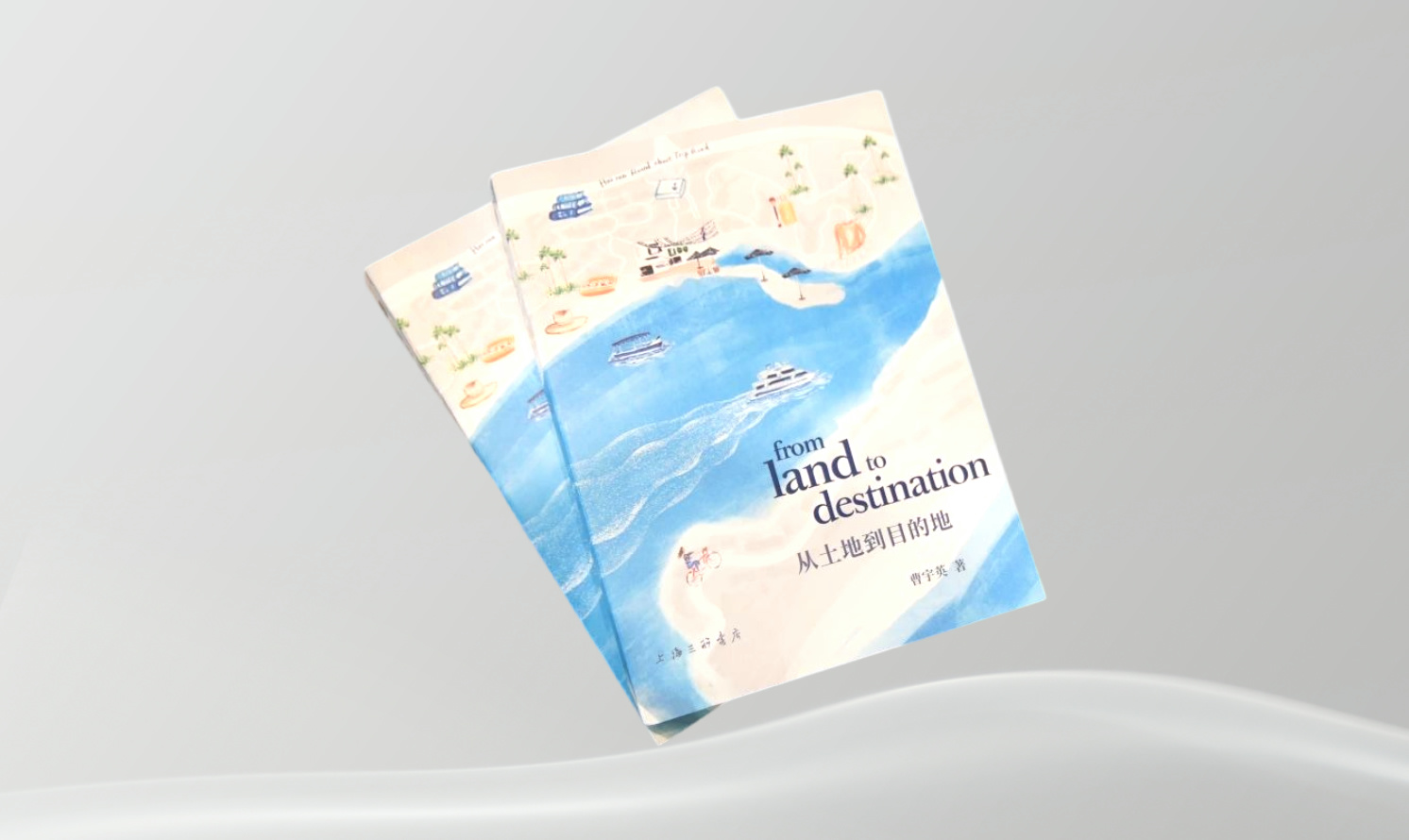景觀績(jī)效研究:社會(huì)���、經(jīng)濟(jì)和環(huán)境效益是否總是相得益彰���?
A Study of Landscape Performance:Do Social, Economic and Environmental Benefits Always Complement Each Other?
作者:羅毅、李明翰 Author: Yi LUO, Ming-Han LI
摘要……
本研究的目的包括兩個(gè)部分:1)介紹景觀績(jī)效的背景和景觀設(shè)計(jì)學(xué)基金會(huì)的案例研究調(diào)查計(jì)劃�;2)探討景觀環(huán)境����、經(jīng)濟(jì)和社會(huì)效益在可持續(xù)性方面是相互沖突還是相互融合�����。根據(jù)景觀設(shè)計(jì)學(xué)基金會(huì)的定義��,景觀績(jī)效是用來(lái)“衡量景觀設(shè)計(jì)措施在多大程度上實(shí)現(xiàn)既定目標(biāo)�����,并且是否有助于實(shí)現(xiàn)可持續(xù)發(fā)展”��。景觀設(shè)計(jì)學(xué)基金會(huì)根據(jù)可持續(xù)性概念����,通過(guò)量化環(huán)境�、經(jīng)濟(jì)和社會(huì)效益建立了調(diào)查景觀績(jī)效的研究框架�。目前常見(jiàn)的可持續(xù)發(fā)展觀念通常圍繞著探討環(huán)境、經(jīng)濟(jì)和社會(huì)這三方面的效益展開(kāi)����,但是尚難以了解這三者的相互關(guān)系����。大量文獻(xiàn)證實(shí)了人類(lèi)活動(dòng)已對(duì)自然環(huán)境造成了嚴(yán)重影響,這意味著�,在獲得某些效益的同時(shí),其他一些效益將受到阻礙���,因而有必要在景觀績(jī)效中權(quán)衡各個(gè)方面�。了解環(huán)境���、經(jīng)濟(jì)和社會(huì)效益間的相互關(guān)系能夠使設(shè)計(jì)師提升這三者的共容關(guān)系�����、緩和沖突關(guān)系�,并在未來(lái)創(chuàng)造出高績(jī)效景觀�����。本研究中���,我們運(yùn)用景觀設(shè)計(jì)學(xué)基金會(huì)在2011年案例研究調(diào)查計(jì)劃中發(fā)表的39個(gè)景觀績(jī)效案例研究對(duì)4種假設(shè)進(jìn)行了檢驗(yàn)�����。
關(guān)鍵詞 ……
景觀表現(xiàn)��;可持續(xù)性�;沖突����;讓步;景觀設(shè)計(jì)基金會(huì)�����;高績(jī)效景觀
Abstract ...
The purpose of this study is two-fold: 1) to introduce background of landscape performance and the Cast Study Investigation program of Landscape Architecture Foundation; and 2) to explore whether landscape’s environmental, economic and social benefits are conflicting or converging for sustainability. Landscape performance, as defined by the Landscape Architecture Foundation, is “the measure of efficiency with which landscape solutions fulfill their intended purpose and contribute toward sustainability.” Landscape Architecture Foundation based on the concept of sustainability to establish the research framework for investigating landscape performance by quantifying environmental, economic and social benefits. The current common sustainable development concept often discusses the benefits in the three environmental, economic and social aspects whereas their interrelationship is hardly addressed. Considering the large body of literature supporting the fact that human activities have significant influences on the natural environment, it seems that certain benefits would impede other benefits, and therefore result in tradeoffs in landscape performance. Understanding the interrelationship between the environmental, economic and social benefits, allows designers to enhance the compatible relationships, mitigate the conflicting relationships and create high-performing landscapes in the future. In this study, we used the 39 landscape performance case studies published by the Landscape Architecture Foundation in its 2011 Case Study Investigation (CSI) program to test four hypotheses.
Key words ...
Sustainability; Conflict; Tradeoff; Landscape Architecture Foundation; High-Performing Landscape.
城市景觀設(shè)計(jì)中的時(shí)間變化
Examples Showcasing Time Changes of Urban Landscape Architecture
作者:卡羅爾?R?約翰遜 Author: Carol R. JOHNSON
摘要 ……
在城市區(qū)域中進(jìn)行設(shè)計(jì)的景觀設(shè)計(jì)師都面臨著一些與所有景觀項(xiàng)目類(lèi)似的挑戰(zhàn)��,但也有一些是城市場(chǎng)地中所特有的問(wèn)題��。本文介紹了三個(gè)案例—哈佛大學(xué)中一棟20世紀(jì)建筑的景觀設(shè)計(jì)��,以及兩處城市濱河地區(qū)的景觀設(shè)計(jì)�����。每一個(gè)案例的成功在很大程度上都?xì)w功于樹(shù)木的生長(zhǎng)����。此外,對(duì)場(chǎng)地的公共功能和整體環(huán)境進(jìn)行的設(shè)計(jì)將會(huì)對(duì)項(xiàng)目的最終效果產(chǎn)生重要影響���。
關(guān)鍵詞 ……
地理設(shè)計(jì)�;種植;樹(shù)木����;土壤;城市景觀設(shè)計(jì)�;時(shí)間變化
Abstract ...
Landscape architects who work in urban areas face some challenges which are similar to all landscape projects, and some of them are unique to urban sites. The article describes the landscape of a 20th Century buildings at Harvard University, and two other urban sites along rivers. In each case, the growth of trees has contributed significantly to the success of the project. In addition, a layout responsive to public use and the overall environment has contributed greatly to the final result.
Key words ...
rees; Soil; Urban Landscape Architecture; Temporal Change
因時(shí)而變的植物景觀
Plant Landscape Changing over Time
作者:董麗 Author: Li DONG
摘要 ……
2一日之中、一年之中�、植物個(gè)體的生命周期中,以及植物群落的演替過(guò)程中�����,植物景觀都將呈現(xiàn)出豐富的變化��。這種變化不僅體現(xiàn)在植物自身�����,也體現(xiàn)在植物所構(gòu)成的空間特征上��。本文概述了植物景觀的變化����,提出了結(jié)合這些變化的種植設(shè)計(jì)手法���,并指出了當(dāng)今社會(huì)對(duì)于植物景觀的錯(cuò)誤認(rèn)識(shí)。
關(guān)鍵詞 ……
地理設(shè)計(jì)����;植物��;群落���;變化����;季節(jié)
Abstract ...
Within a day or a year, during the life cycle of individual plants and the evolving process of the whole plant community, temporal changes of plant landscape have been taking place. Such changes are reflected not only in the plants per se, but also the spatial characteristics formed by the plants. This interview concentrates on the changes of plant landscape, and introduces planting design guidelines according to these changes, addressing the wrong understanding of plant landscape.
Key words ...
Plant; Plant Community; Change; Season
氛圍:景觀設(shè)計(jì)中的質(zhì)量�����、感知與時(shí)間概念
Atmosphere: Quality, Perception and the Concept of Time in Landscape Architecture
作者:斯蒂格?L?安德森 Author: Stig L. ANDERSSON
摘要 ……
什么是景觀設(shè)計(jì)的質(zhì)量����?我們?nèi)绾螌?duì)氛圍進(jìn)行定義?時(shí)間又在城市設(shè)計(jì)中扮演著怎樣的角色���?斯蒂格?L?安德森在本文中對(duì)這些問(wèn)題進(jìn)行了回應(yīng)�。他強(qiáng)調(diào)了環(huán)境背景的重要性,以及景觀設(shè)計(jì)中數(shù)量與質(zhì)量的差別��,并倡導(dǎo)通過(guò)新穎和充滿驚喜的方式�,建立一種能夠創(chuàng)造新意義、新體驗(yàn)和新氛圍�����,并吸引我們?nèi)谌氤鞘泻妥匀坏木坝^設(shè)計(jì)�����。
關(guān)鍵詞 ……
氛圍��;質(zhì)量��;環(huán)境背景�;融入
Abstract ...
What is quality in landscape architecture? How do we define atmosphere? And what is the role of time in relation to urban design? These are the questions addressed by Stig L. Andersson in this article. He stresses the importance of context and the difference between quantity and quality in landscape design, arguing for the importance of a landscape design that creates new meanings, new experiences and new contexts that force us to engage with city and nature in new and surprising ways.
Key words ...
Atmosphere; Quality; Context; Engagement
荏苒之美
The Layers of Time
作者:大衛(wèi)?萊瑟巴羅 Author: David LEATHERBARROW
摘要 ……
本文呈述的主要觀點(diǎn)包括:時(shí)間決定了建筑形態(tài)的主要順序,以及景觀��、街道����、建筑、房間和各個(gè)細(xì)部的實(shí)際情況和意義。對(duì)于一個(gè)經(jīng)過(guò)設(shè)計(jì)并得以施工建造的場(chǎng)所來(lái)說(shuō)�,時(shí)間并不是一種或然屬性,而是對(duì)場(chǎng)地的基本結(jié)構(gòu)和意義至關(guān)重要的因素��。時(shí)間在建筑的不同空間中不斷流動(dòng)和靜止���,本文在此對(duì)時(shí)間的三個(gè)維度——世界時(shí)間��、項(xiàng)目時(shí)間和體驗(yàn)時(shí)間——進(jìn)行了討論��。通過(guò)考慮建筑或景觀的材料、空間順序和位置���,對(duì)建筑的過(guò)去���、現(xiàn)在和未來(lái)之間的相互聯(lián)系進(jìn)行了探討。所有這一切又包含兩部分的含義:我們的生活都被記錄在我們所生活的空間中�,而真正記錄著一切的卻是時(shí)間。
關(guān)鍵詞 ……
運(yùn)動(dòng)�����;質(zhì)量����;預(yù)測(cè)��;記憶���;投射
Abstract ...
The basic thesis of this paper is that temporality gives access to the primary order of architectural topography and thus to the reality and meaning of landscapes, streets, buildings, rooms, and their details. Time is not a contingent attribute of the places intended in design and realized through construction but a key to their essential structure and significance. Three dimensions of temporality are discussed: the time of the world, of the project, and of the experience, as it moves through and comes to rest in a work’s several spatial situations. The interconnections between prior, present, and future appearances are discussed, in consideration of a building or landscape’s materials, spatial order, and location. All of this is set out in a two-part argument: that the stories of our lives are recorded in the spaces of our lives, and that this recording is essentially temporal.
Key words ...
Movement; Qualification; Anticipation; Recollection; Projection
春秋冬夏—北京百子甲壹宋莊工作室的景與觀
Spring and Autumn, Winter and Summer—Scenery and Impression from Atelier 100s+1 Songzhuang Office in Beijing
作者:彭樂(lè)樂(lè) Author: Lele PENG
摘要……
文章介紹了北京百子甲壹宋莊工作室的設(shè)計(jì)。作者通過(guò)對(duì)四季的不同感知����、晝夜光線、溫度變化的描述���,展現(xiàn)出工作室設(shè)計(jì)的景與觀���,強(qiáng)調(diào)了對(duì)景觀具象設(shè)計(jì)之外的意象認(rèn)知。
關(guān)鍵詞……
春秋�����;冬夏��;晝夜��;景與觀
Abstract ...
This article introduces the design of Atelier 100s+1 Songzhuang Office in Beijing. Through describing experiences and perceptions of four seasons, day and night, and the temperature changes, the author delineates the scenery and impression of the buildings, emphasizing that the imagery cognition is more important than the detail design in landscape architecture.
Key words ...
Spring and Autumn; Winter and Summer; Day and Night; Scenery and Impression
林中澄明——德國(guó)因戈?duì)柺┧貨_積平原森林中的臨時(shí)裝置
Lichtung — An Ephemeral Installation in the Floodplain Forest of Ingolstadt, Germany
作者:OFICINAA設(shè)計(jì)事務(wù)所 Author: by OFICINAA
摘要……
“林中澄明”這一裝置位于德國(guó)因戈?duì)柺┧厥械臎_積林地中���,沿當(dāng)?shù)匾粭l400m長(zhǎng)的狹窄小徑而布設(shè)�。它旨在使多瑙河能被居民們觸摸和感知?�!癓ichtung”一詞在德語(yǔ)中意為“林間空地”——由“l(fā)icht”(德語(yǔ)中意為“光”)演變而來(lái)——是指一種不加掩飾的���、自我反思的空間���。
關(guān)鍵詞……
氛圍;沖積����;林中空地;微氣候
Abstract ...
Lichtung is an installation built along a narrow pathway of 400 m in the alluvial forest of Ingolstadt, Germany. It aims to immerse residents into the haptic qualities of the Danube River. Lichtung is the German word for “clearing”, and derives from light (licht); it is a space of disclosure, appearance, and reverberation.
Key words ...
Ephemeral Installation; Atmosphere; Alluvial; Clearing; Micro-climates
多倫多市高架公路橋下公園
Underpass Park, Toronto
作者:PFS Author: PFS
摘要……
發(fā)生在20世紀(jì)中期的大規(guī)模城市公路建設(shè)運(yùn)動(dòng)�����,導(dǎo)致北美許多城市目前到處充斥著高架公路���,這些公路將街區(qū)隔斷,并且留下了未被利用的�����、廢棄的、往往具有危險(xiǎn)性的場(chǎng)所��。多倫多高架公路橋下公園通過(guò)提出建造一個(gè)變革性的公園空間對(duì)這些城市街區(qū)進(jìn)行了修復(fù)�,這將有助于重新連接一個(gè)不斷發(fā)展的社區(qū),同時(shí)創(chuàng)造出一個(gè)具有高利用度��、高參與性和高關(guān)注度的空間��。
關(guān)鍵詞……
多倫多����;重新連接;變革����;非傳統(tǒng)
Abstract ...
As a result of aggressive urban highway building that took place during the mid 20th century, North American cities are littered with elevated roadways that have severed neighborhoods and left behind unused, derelict and often dangerous places. Underpass Park in Toronto fights back by delivering a transformative park space that helps reconnect an evolving community while providing a highly useable, engaging and eye catching space in the process.
Key words ...
Toronto; Reconnection; Transformation; Unconventional
24節(jié)氣園——日本豐洲公園城市社區(qū)景觀設(shè)計(jì)
24 Solar Term Gardens — The Landscape Design of the Park City Toyosu Community, Japan
作者:Earthscape景觀設(shè)計(jì)事務(wù)所 Author: Earthscape
摘要……
24節(jié)氣反映著一年中季節(jié)的變化,每個(gè)節(jié)氣都是東方農(nóng)歷中的一個(gè)節(jié)點(diǎn)��,有著相應(yīng)的天文事件或重要的自然現(xiàn)象����。本項(xiàng)目依據(jù)24節(jié)氣設(shè)計(jì)了24個(gè)獨(dú)立的、各具特色的花園�����。
關(guān)鍵詞……
24節(jié)氣;季節(jié)��;農(nóng)歷�����;花園
Abstract ...
24 solar terms display the seasonal changes throughout a year. The solar cycle is composed of 24 points on the traditional East Asian lunar calendar, which correspond to particular astronomical events or signifying natural phenomenon. In this project, we created 24 private gardens according to the 24 solar terms.
Key words ...
24 Solar Terms; Season; Lunar Calendar; Garden
一個(gè)湖泊的重生——大同文瀛湖景觀設(shè)計(jì)
The Rebirth of a Lake — Landscape Design of Wenying Lake in Datong
作者:AECOM Author: AECOM
摘要……
2008年�,AECOM以實(shí)現(xiàn)湖泊的重生為目標(biāo),開(kāi)始了文瀛湖周邊地區(qū)的景觀設(shè)計(jì)工作��。通過(guò)一系列注重生態(tài)價(jià)值的設(shè)計(jì)手法���,一個(gè)以生態(tài)自然為主軸��、歷史文化為核心的“城市綠肺”和水岸休閑空間得以重現(xiàn)���。大型湖泊景觀重現(xiàn)在黃土高原,生態(tài)鳥(niǎo)島回歸喧囂都市�。市民們?cè)诖讼硎苤笞匀?���、文化和藝術(shù)所帶來(lái)的高品質(zhì)生活,為文瀛湖的重生寫(xiě)下了最好的注腳�。
關(guān)鍵詞……
文瀛湖����;城市綠肺�����;生態(tài)修復(fù)��;重生
Abstract ...
In 2008, AECOM began the landscape design for the area surrounding Wenying Lake with the goal of revitalizing the lake. An “Urban Green Lung” and waterfront recreational space that focused on nature, history, and culture were recreated through a series of eco-focused design approaches. As a result, a large lake landscape has reappeared on the Loess Plateau and an eco-bird island has returned to the tumultuous city. Residents have benefited from the high-quality life brought about by nature, culture, and art, making the best footnote for the rebirth of Wenying Lake.
Key words ...
Wenying Lake; Urban Green Lung; Ecological Restoration; Rebirth
自然的水系與文化的傳承——美國(guó)印第安納州拉法葉市沃巴士河道未來(lái)30年規(guī)劃
Natural Water as Cultural Water — A Thirty Year Plan for Wabash River Corridor in Lafayette, Indiana, USA
作者:徐之成 Author: Zhicheng XU
摘要……
本項(xiàng)目旨在尋找到印第安納州拉法葉市沃巴士河流域的文化和自然之間的平衡點(diǎn)��,季節(jié)性的洪水�����、無(wú)人管理的荒地和鐵道的阻隔致使項(xiàng)目所在區(qū)域無(wú)法被周邊的居民充分使用��。該項(xiàng)目的設(shè)計(jì)方案運(yùn)用了文化再現(xiàn)和雨洪管理技術(shù)���,旨在復(fù)原生態(tài)和社會(huì)活力��。通過(guò)自發(fā)性利用和動(dòng)態(tài)組織�����,場(chǎng)地能夠轉(zhuǎn)變?yōu)橐环N具有文化特色的��、可帶來(lái)活躍的濱水體驗(yàn)的可持續(xù)基礎(chǔ)設(shè)施��。
關(guān)鍵詞……
洪水����;轉(zhuǎn)變;景觀基礎(chǔ)設(shè)施����;時(shí)間;自然�����;文化
Abstract ...
The project seeks to find the balancing point between culture and nature along the Wabash River in Lafayette, Indiana, which is currently underappreciated because of flooding, vacancy and disconnection. The design solutionis an embodiment of cultural representation and technology of stormwater management in order to achieve ecological and social resilience. With potential for spontaneous use and dynamic programming, the site can transform into asustainableinfrastructure with a cultural identity that provides active waterfront experience.
Key words ...
Flooding; Transformation; Landscape Infrastructure; Time; Nature; Culture
時(shí)空雕塑
Timescape
作者:貝爾納多?迪亞斯��、谷井千晶�、鐘秋瑩 Author: Bernardo DIAS, Chiaki YATSUI, Qiuying ZHONG
摘要……
時(shí)空雕塑通過(guò)對(duì)建筑衰退的過(guò)程和潛能的自然探索來(lái)對(duì)幾何雕塑進(jìn)行變形。項(xiàng)目利用計(jì)算機(jī)技術(shù)對(duì)互鎖磚的幾何結(jié)構(gòu)進(jìn)行了研究�,并生成3D模型,其結(jié)構(gòu)采用當(dāng)?shù)夭牧稀嗤?�、軟木�����、沙子和水泥——?gòu)筑而成�����。這些材料以不同比例進(jìn)行混合���,并可在高壓水流的沖擊下進(jìn)行分解�。材料的形態(tài)學(xué)構(gòu)造可以使雕塑的部分結(jié)構(gòu)以堅(jiān)固的混凝土為基礎(chǔ)�,起到結(jié)構(gòu)支撐作用,而其他部分則相對(duì)脆弱�、多孔且具有紋理。這一做法能夠使建筑具有更多樣的景觀外貌����,創(chuàng)造出一系列有趣且具不確定性的非正式空間。
關(guān)鍵詞……
建筑衰退����;互鎖磚;當(dāng)?shù)夭牧?����;形態(tài)學(xué)塑造
Abstract ...
Timescape is a project that morphs geometric sculptures with nature to explore the idea of the picturesque and the potential of architectural decay. The virtual side of the project explores the geometry of interlocking bricks, generated from 3D pieces cast from local materials, such as earth, cork, sand, and cement, that will decomposed from exposure to high pressures of water mixed at different ratios. The shifting morphological shape means that some parts will maintain a concrete structural base, while others are more fragile, porous, and textural. During the process of exposure, the architecture is sacrificed to wider landscape, creating a series of informal spaces that are both intriguing and uncertain.
Key words ...
Architectural Decay; Interlocking Bricks; Local Materials; Morphological Shape
高海岸:走向雪的海拔經(jīng)濟(jì)
The High Coast: Toward an Altitudinal Economy of Snow
作者:亞歷山大?阿羅約Author:Alexander ARROYO
摘要……
作為地質(zhì)圈和氣象圈之間最直接的交接面�����,高海拔山區(qū)的“高海岸”擁有巨大、分散的�,但卻并未得到廣泛認(rèn)知的淡水“海洋”—積雪。在美國(guó)西部地區(qū)����,80%以上的水源來(lái)自落基山脈、內(nèi)華達(dá)山脈及其他山脈的融雪���。因此�,雪在很大程度上影響了區(qū)域性城市化過(guò)程中“地質(zhì)技術(shù)”系統(tǒng)的形態(tài)��。該系統(tǒng)中的基礎(chǔ)設(shè)施性組成部分��,包括從雪籬到森林格局的方方面面����,反映出了特定的海拔和地形范圍內(nèi)當(dāng)?shù)亟?jīng)濟(jì)和生態(tài)的情況。對(duì)這些組成部分的多樣化整合需要一種跨越多個(gè)時(shí)空尺度的�、既分散又系統(tǒng)化的積雪區(qū)域管理。在帕特里克?格迪斯�����、劉易斯?芒福德、本頓?邁克凱耶的研究的基礎(chǔ)上��,本研究通過(guò)重新審視“雪”并將其視為理論和物質(zhì)的“地質(zhì)技術(shù)”實(shí)踐平臺(tái)�,進(jìn)而為加利福尼亞州��、內(nèi)華達(dá)州和猶他州的一系列場(chǎng)地展開(kāi)了一幅熱動(dòng)力環(huán)境的推測(cè)性圖景�,就高海岸“積雪急劇消融”的可能性與應(yīng)用進(jìn)行了探索。
關(guān)鍵詞……
雪����;巖土工程學(xué);熱力學(xué)�;總體經(jīng)濟(jì);遠(yuǎn)端城市化
Abstract ...
As avant-garde interface between geologic and meteorologic media, high-altitude montane and alpine zones constitute a "High Coast" delimiting a massive, diffuse, yet largely unrecognized freshwater "ocean": the snowpack. In the western United States, up to 80% of water resources draw from the snowpack of the Rockies, Sierra Nevadas, and other ranges; accordingly, snow has critically shaped geotechnical systems of regional urbanization, both up- and down-slope. The infrastructural components of such systems express the vernacular geographies of economy and ecology unique to each altitudinal and orographic (mountain) range, from snow-fences to forestry patterns. The highly varied coupling of components evidences decentralized yet systematic territorial management of snow across multiple spatio-temporal scales. Reimaging snow as theoretical and material ground for geotechnical praxis (following Patrick Geddes, Lewis Mumford, and Benton MacKaye), this project proposes a speculative thermodynamic narrative for a set of sites in California, Nevada, and Utah, exploring the potentials and implications of a "Big Melt" for the High Coast.
Key words ...
Snow; Geotechnics; Thermodynamics; General Economy; Remote Urbanization
阿爾卑斯山轉(zhuǎn)型過(guò)程——瑞士山區(qū)作為一種運(yùn)行中的城市生態(tài)系統(tǒng)
Alps as Process — Engaging Montane Switzerland as an Operating Urban Ecology
作者:達(dá)亞?柏高?斯圖茲?司提帕查爾 Author: Daia Paco Stutz STEPPACHER
摘要……
本項(xiàng)目從最初對(duì)瑞士的地下城市化和超大型基礎(chǔ)設(shè)施的研究項(xiàng)目���,演變?yōu)橐粋€(gè)關(guān)注阿爾卑斯地區(qū)的畢業(yè)設(shè)計(jì)項(xiàng)目:從氣候條件的顯著變化�、大量基礎(chǔ)設(shè)施集約化�����,到集中的房地產(chǎn)熱潮以及隨之產(chǎn)生的廢棄和衰退現(xiàn)象�����,一系列動(dòng)態(tài)力量目前正在影響歐洲阿爾卑斯地區(qū),并徹底改變其地理和區(qū)域關(guān)系���。這些城市轉(zhuǎn)型作為新興但卻不可避免的現(xiàn)象����,對(duì)那些靜態(tài)�、孤立地將阿爾卑斯地區(qū)概括為風(fēng)景如畫(huà)及以自然景觀為主的主流觀點(diǎn),以及觀點(diǎn)背后的一系列保護(hù)和保存工作提出了質(zhì)疑���。本文通過(guò)對(duì)世界上最大最深的隧道——瑞士阿爾卑斯鐵路隧道(又稱阿爾卑斯樞紐計(jì)劃)的研究��,提出了對(duì)阿爾卑斯山脈認(rèn)知的反思�,該地區(qū)不僅是處于轉(zhuǎn)型期間被全面城市化和受到人工干預(yù)的區(qū)域��,而其本身也是一個(gè)運(yùn)行中的城市生態(tài)系統(tǒng):在該系統(tǒng)中����,城市化、去城市化����、增長(zhǎng)和萎縮過(guò)程成為一種系統(tǒng)、靈活的設(shè)計(jì)方式的程序化向量。
關(guān)鍵詞……
阿爾卑斯山��;基礎(chǔ)設(shè)施�����;阿爾卑斯鐵路隧道��;城市生態(tài)
Abstract ...
What started as a research project on underground urbanization and mega-infrastructures in Switzerland became a thesis project on the Alps as a whole: from significant changes in climate conditions, heavy infrastructural intensification, to concentrated real-estate boom together with simultaneous abandonment and decline, a whole series of dynamic forces are currently pressing on the European Alps while thoroughly changing its geography and territorial relationships. As new yet indispensable phenomena, these urban transformations heavily question the predominant static and isolated view of the picturesque and natural alpine landscapes as well as the conservation and preservation efforts behind them. Through the lens of the new Transalpine Rail Tunnel in Switzerland (AlpTransit), the largest and deepest tunnel on earth, the paper outlines a radical rethinking of the Alps not only as an thoroughly urbanized and artificial territory in transition, but as an operating urban ecology itself where processes of urbanization, de-urbanization, growth and shrinkage become the programmatic vectors of a systemic and flexible design approach.
Key words ...
Alps; Infrastructure; Alps Transalpine Rail Tunnel; Urban Ecology
 京公海網(wǎng)安備 110108000058號(hào)
京公海網(wǎng)安備 110108000058號(hào)
